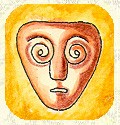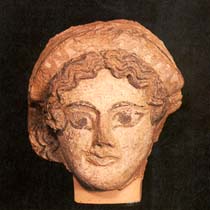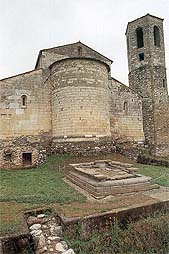
Pieve a Socana

Photo: G.A.C.
In fact, the entire temple is to be found under the structure of a Paleochristian three-apsed construction, covered in turn by the Romanesque pieve.
The fact that this place of worship originally devoted to Pagan gods was then used centuries later for rituals connected to monotheistic gods can clearly be seen.

Photo: G.A.C.
The altar consists of large blocks of stone, connected by lead dovetail brackets.
Continuing research, an Etruscan temple was discovered; it must have faced east, therefore in the opposite direction to the present church.
Nowadays the wide temple entrance steps 18.4 metres long in travertine can be seen. The flight of steps consists of at least twelve steps framed by two moulded quadrangular podia.
It is impossible to determine the dimensions of the Etruscan temple as the early Christian Church and Romanesque pieve were built subsequently.
On this site we passed from pagan to monotheistic worship. The various "nations" who visited this place perceived and felt it to be suitable for rituals and spiritual worship; it is here that religion incarnates its strong link with the natural environment.
Two fetid stone "wheels" were found in the church bearing Etruscan V and IV Century B.C. inscriptions; they were probably votive offerings.
The most fascinating discoveries were the V Century B.C. antefixes with a maenad head and the head of Minerva dating back to the Hellenistic Age.
Perhaps the temple was connected to a settlement which must have been a river checkpoint, a northwards-northeastwards junction and, moreover, a distribution point for Volterra ceramics also testified in Avena.